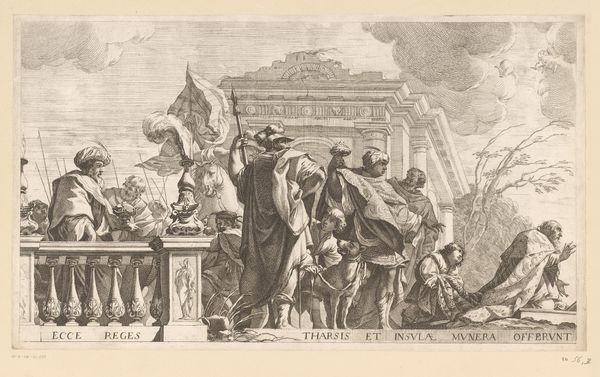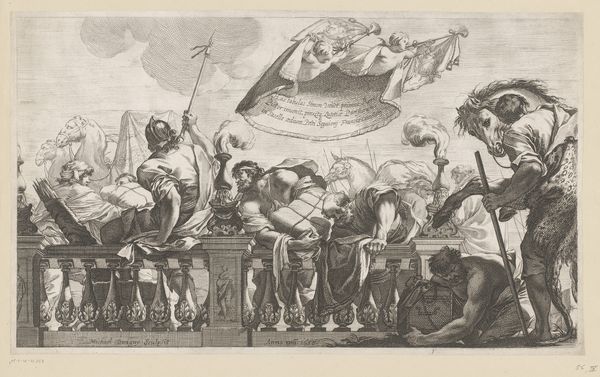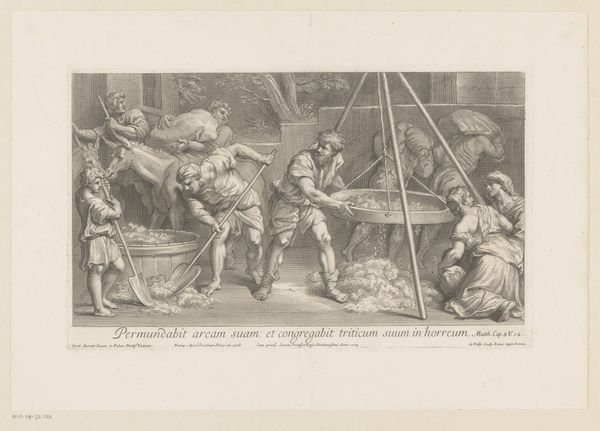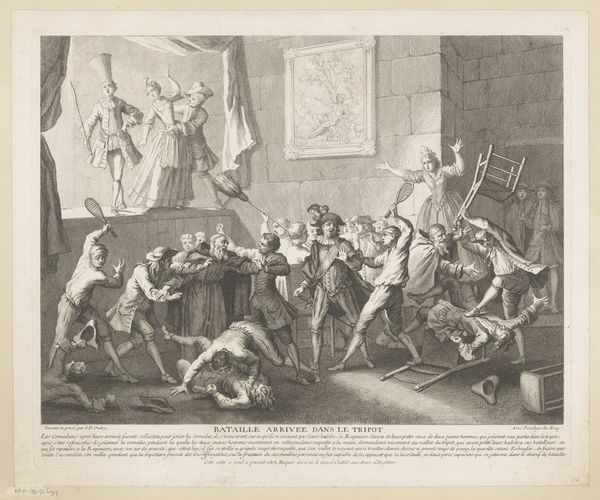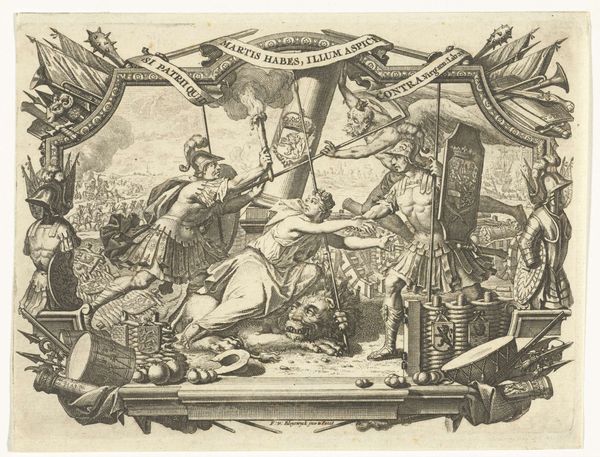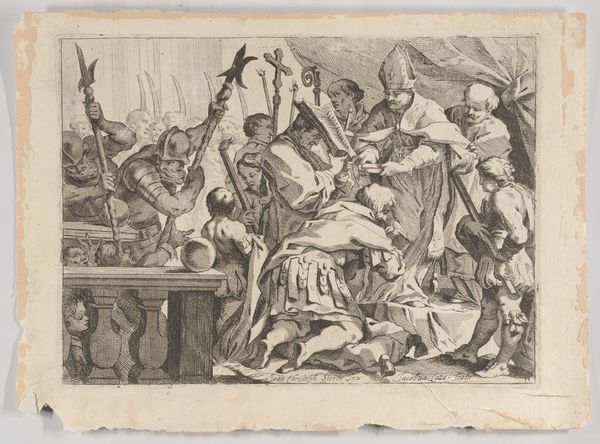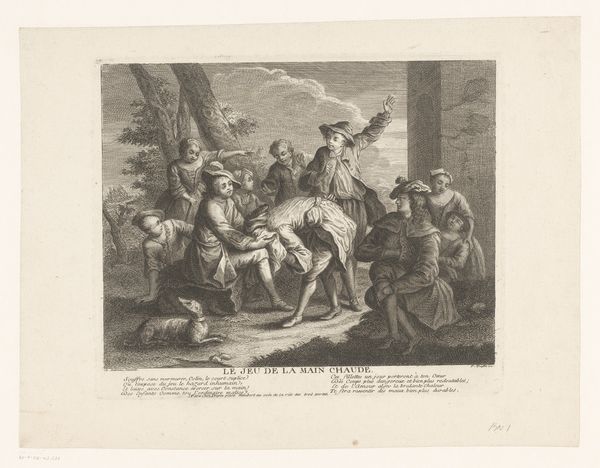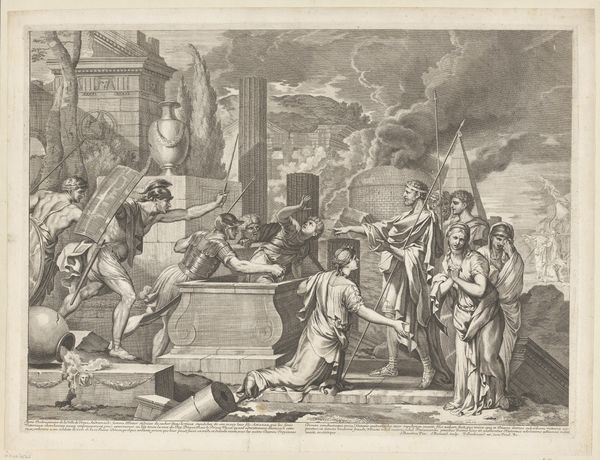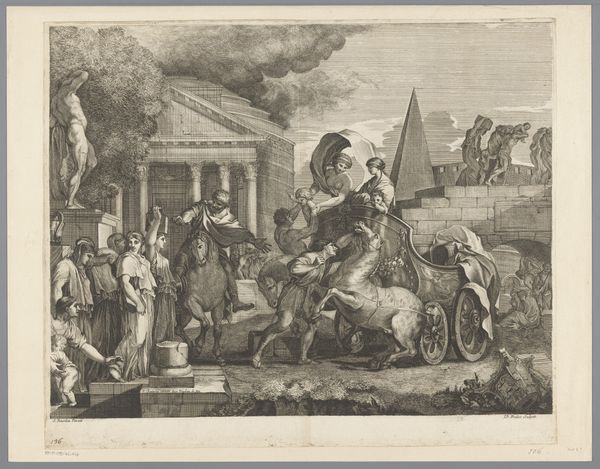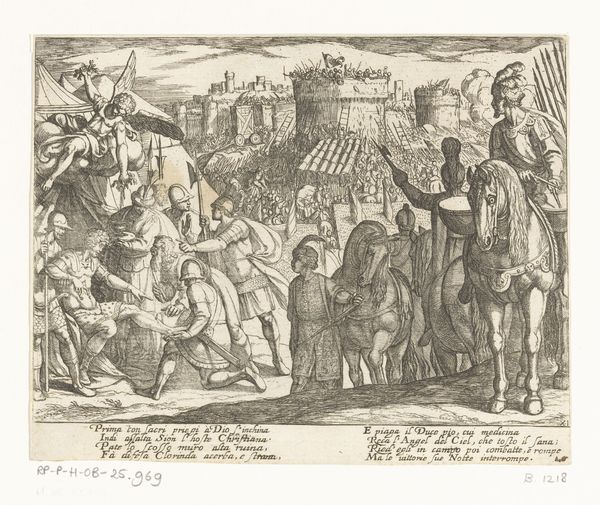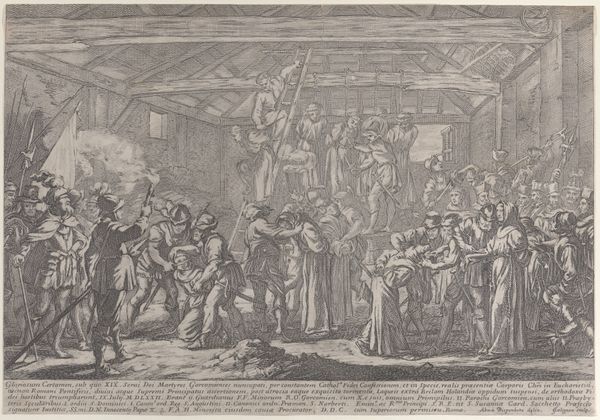
print, engraving
#
baroque
# print
#
figuration
#
history-painting
#
engraving
Dimensions: height 324 mm, width 482 mm
Copyright: Rijks Museum: Open Domain
Curator: Looking at this print, "Adoration of the Kings" created by Michel Dorigny around 1638, I'm immediately struck by how dynamic the scene feels. It's teeming with movement despite the stillness inherent in the engraving medium. What are your first impressions? Editor: An almost theatrical chaos, wouldn’t you agree? My eyes are drawn to the figures mid-action, especially that trumpet player whose sound seems to resonate through the ruins, evoking a collision of worlds. The sharp contrasts emphasize an almost unsettling tone. Curator: Right, and that "collision of worlds," is so fitting! Consider how Dorigny layers classical architectural ruins with religious fervor. Those collapsing pillars in the backdrop tell a story themselves, symbolizing perhaps the fading of old empires, paving the way for something new and profound. It mirrors this pivotal moment of acknowledging the newborn Christ. Editor: That's an intriguing perspective, layering historical context within the adoration narrative. I notice the prominence given to material objects too, beyond mere aesthetic decoration. Think of those luminous trumpets that announce change and the gifts themselves carried by the magi which symbolize acknowledgment, respect, almost like offerings. What meaning could Dorigny be layering? Curator: I see that point. I find the visual cues—the contrast between the fragility of life and the imposing backdrop—almost melancholic despite the supposed jubilation. Dorigny isn't just telling the story, he's letting the visual symbolism enrich a deeper message. It's a bittersweet symphony. Editor: A bittersweet symphony perfectly captures that contrast, yes. The linear style also highlights a world where everything is neatly ordered, categorized, and understood according to the era’s fascination with typology. Perhaps this is what the Adoration of the Kings symbolizes: not just divine recognition, but humankind seeking its place in an intricate, divinely charted, map of existence. I’m left reflecting how symbols still echo today and what new forms of adoration they may carry. Curator: Leaving us, maybe, questioning the ruins and heralds of our own time. Dorigny set that stage so long ago. I appreciate how this seemingly simple historical engraving nudges our imagination into our world!
Comments
No comments
Be the first to comment and join the conversation on the ultimate creative platform.
